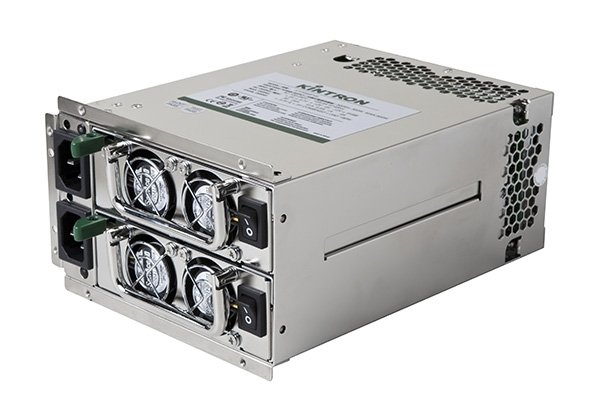What is Active PFC?
Answer:
Active Power Factor Correction improves the power factor value of the PSU by altering the input current wave shape. PSUs with Active PFC can achieve a power factor of 0.99, while PSUs with Passive PFC can only achieve 0.70, and PSUs with no PFC achieve less than 0.60. A higher power factor reduces transmission losses and improves efficiency for power companies, making Active PFC an important feature for the environment.
How can a PFC power supply save energy?
Answer:
By reducing the volt-amperes your electric utility has to deliver in order to provide a gene power level demanded by the power supply. Much less power is lost in generating useless “harmonics” that unnecessarily load down the AC electrical delivery system.
What is “working temperature”?
Answer:
In general, a PSU’s environmental temperature is around 25°C. Inside a case, because of components like your CPU and video card, the working temperature of your PSU will usually be higher.
How can I be sure that a PSU with an 80 PLUS® logo really passed certification?
Answer:
To avoid fraudulent certification, check the 80 PLUS® official website to see if the product is listed: www.80plus.org Sometimes, companies will change specs to pass certification. While it is difficult for users to identify these misleading PSUs, some ways to protect yourself are to always choose well-known brands, do comparisons and read reviews.
Are PSUs with multiple +12V outputs more reliable than PSUs with a single +12V output?
Answer:
Yes, multiple +12V outputs are used to ensure safety protection; each output keeps the current within a safe range. PSUs with a single +12V output generally tend to be older designs and present greater risk because, in the event of a short in any component, there is no over current protection.
How come I cannot find the voltage (115V / 230V) switch on my power supply?
Answer:
If you cannot find a switch in the back of the power supply to adjust 115v/230v, you have an automatic adjusting power supply.
This type of Power Supply Unit actually comes with Auto Voltage Control. So, it will detect voltage automatically.
Are multiple +12V outputs PSU more stable and reliable than single +12V output PSU?
Answer:
Multiple +12V outputs are mainly used for safety protection. Each output keeps the current within a safe range. Single +12V output is an old design; it is used to avoid wrong activating of protection circuit by mass power consuming from video card. However, it is very dangerous, because when short happens in any component; there will be no over-current protection. It is easy to cause fire, so multiple +12V outputs PSU PSUs use multiple +12V outputs to avoid this danger. Some companies try to perpetuate a myth that power can be “trapped” on a rail. That’s just wrong. Each rail has its own circuitry for the protection of the PSU and the devices connected to it, but there’s no way one rail can limit the total power available on the others.
ARE MULTIPLE 12-VOLT RAILS BETTER THAN A SINGLE 12-VOLT RAIL?
Answer:
With all the hype about multiple 12-volt rails (ads claim that two rails is better than one, five is better than four, etc.), you’d think it was a better design. Unfortunately, it’s not!
Here are the facts: A large, single 12-volt rail (without a 240VA limit) can transfer 100% of the 12-volt output from the PSU to the computer, while a multi-rail 12-volt design has distribution losses of up to 30% of the power supply’s rating. Those losses occur because power literally gets “trapped” on under-utilized rails. For example, if the 12-volt rail that powers the CPU is rated for 17 amps and the CPU only uses 7A, the remaining 10A is unusable, since it is isolated from the rest of the system.
Since the maximum current from any one 12-volt rail of a multiple-rail PSU is limited to 20 amps (240VA / 12 volts = 20 amps), PCs with high-performance components that draw over 20 amps from the same rail are subject to over-current shutdowns. With power requirements for multiple processors and graphics cards continuing to grow, the multiple-rail design, with its 240VA limit per rail, is basically obsolete.
PC Power and Cooling is once again leading the industry. All of our power supplies now feature a large, single 12-volt rail. The design is favored by major processor and graphics companies, complies with EPS12V specs (the 240VA limit is not a requirement) and is approved by all major safety agencies such as UL and TUV.3
How do I pick a good PSU?
Answer:
It is not easy for a general user to judge if a PSU is good or not. Here are some principles.
• Choose a well-known brand.
• Has the PSU passed safety certifications?
• Is the wattage number the value for peak output or continuous output? Continuous is better.
• Compare the weight with other similar products to see if it is too light.
• (Not suitable for passive PFC power supply)
• Compare the internal components, if they have size difference.
• Does the PSU have the 80 PLUS certification.


